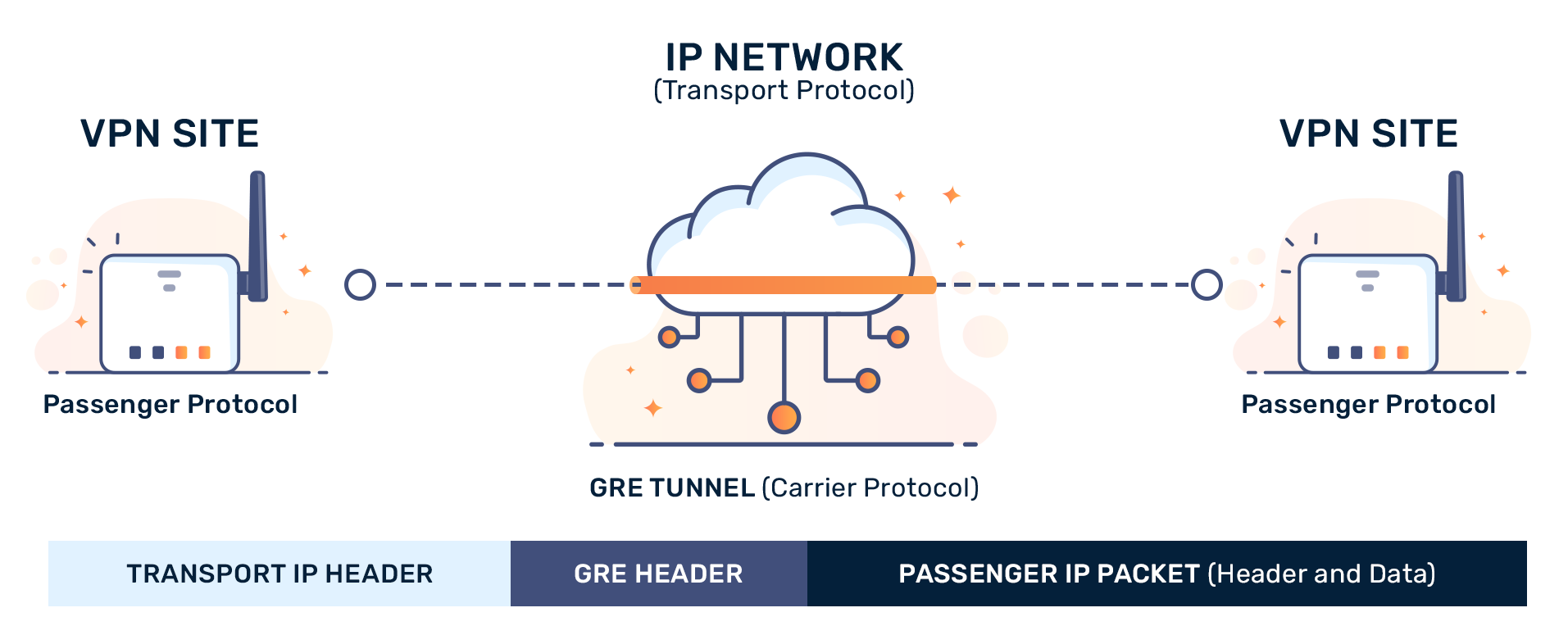What is Generic Routing Encapsulation (GRE)? How Does GRE Work?
What is Generic Routing Encapsulation(GRE)? How does it work and what is it used for?

What is Generic Routing Encapsulation(GRE)? How does it work and what is it used for?

What is GRE anyway? GRE stands for Generic Routing Encapsulation. It's a protocol that operates to connect two servers, or sites, together. GRE tunnels often transport multiple layers of data and are multicast. This means that tunnels can encapsulate virtually any traffic across two points and are fairly easy to configure.
One more thing to note is that there are other forms of site-site tunnels — a non-exhaustive list includes IPIP tunnels, GRETAP tunnels, and more.
While GRE tunnels can be used to transport video, website traffic, and basically anything, they're notably used in the following ways:
As mentioned previously, GRE tunnels encapsulate traffic; this means tunnels do not care about the traffic you send over them. So long as the tunnels are appropriately configured, traffic traverses across the open Internet (tunnels do not encrypt traffic on their own; you are free to use encrypted tunneling through VPN software) in plain text.

Also, GRE tunnels are stateless. When you first configure a tunnel, it is analogous to using unregistered airmail. You load your packages on board (i.e., your packets/data) and send them off to your destination server. Unfortunately, the destination is never made aware of this flight and will only know about the incoming data once it arrives at a given destination. However, you may ask: “How does the destination server know where to send a response?”
The answer is simple: all packets encapsulated through GRE will include both the destination and source, allowing both points to know where to send data back.
The stateless nature of GRE further raises issues: if you, for example, set your MTU (Maximum Transmission Unit) too high, and the destination is configured not to accept packets that large, you will receive no reply or response. The only way to know whether one point’s packets are reaching a destination is through a dump on the receiving server. This reduces overhead on transmissions, but increases the difficulty of debugging the specific issue being caused by the “cargo” on board the “plane.”
With that said, GRE tunneling is supported on many platforms. You will often find time built-in to enterprise routers, but they are available on virtually all Linux platforms with the ip_gre module (in software). The previously-mentioned routers tend to have hardware acceleration to reduce load. Keep this in mind when setting up tunnels, as you may encounter problems with the overhead added by encapsulating data (there are an additional 24 bytes per GR-encapsulated packet).
A Distributed Denial of Service attack is a category of attacks that target multiple areas on a server.
Generic Routing Encapsulation.
A type of network consisting of two devices connected directly to each other.